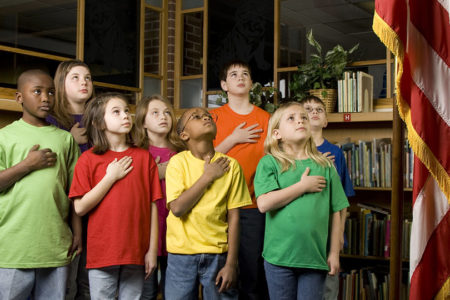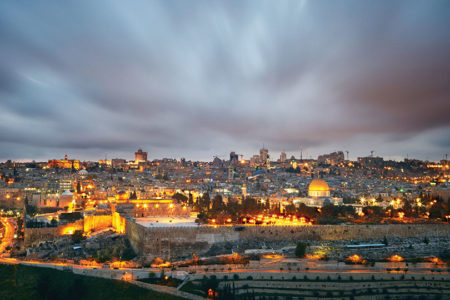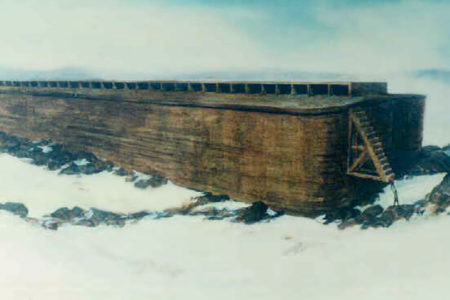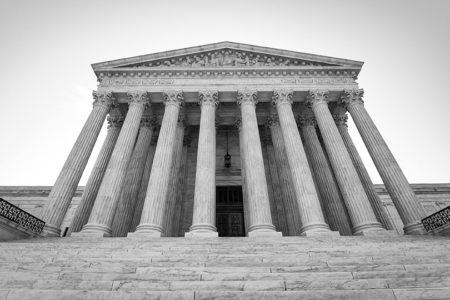Eight Survive!
Despite the absence of Doppler weather tracking, the flood of Noah’s day did not come without warning. God first revealed His plan for catastrophic, global judgment nearly a millennium earlier to Enoch, who named his son Methuselah to commemorate the astounding revelation. The name Methuselah conveys an ominous foreboding and literally means, “When he dies, it shall be sent.”1 It is no coincidence that Methuselah died mere months before the great flood and that his lifespan is the longest in recorded history.
From the time of Adam and Eve’s expulsion from the Garden of Eden until the flood, there was an escalating determination on the part of humanity to defy God’s precepts:
The wickedness of man was great in the earth, and…every intent of the thoughts of his heart was only evil continually. All flesh had corrupted their way on the earth (Gen. 6:5, 12).
Humanity was not only corrupt, but it was filled with violence; the world was ripe for judgment (v. 11). And though God stayed mankind’s execution for many years, He eventually delivered what He promised.
In addition to collective human rebellion against God, many Bible scholars believe there was angelic rebellion as well. Although there are other interpretations of Genesis 6:4, one well-respected view is that some fallen angels left their normal habitation, choosing to live in the physical realm and cohabit with earthly women. These unions then produced giants, “mighty men,…men of renown,” or superhuman offspring who may have been the source for mythology and ancient legends.
Since only human beings can be redeemed, the probable goal of these fallen angels was to saturate the entire human race with a demonic strain, making human salvation impossible.2 God’s redemptive plan for humanity necessitated eliminating a world corrupted by demonic crossbreeding, rampant wickedness, and violence. So God announced, “The end of all flesh has come before Me;….I will destroy them with the earth” (v. 13).
God forewarned mankind through a family of prophets beginning with Enoch; then, Enoch’s son Methuselah; grandson Lamech; and finally, great-grandson Noah. Noah preached about looming worldwide judgment to an increasingly perverse generation. In preparation for the flood, God commanded him to build an ark of refuge (v. 14). Once completed, the ark was a sign of impending judgment, as Noah continued preaching to an unrepentant world.
Then, “in the second month, the seventeenth day of the month [the year Methuselah died],3 on that day all the fountains of the great deep were broken up, and the windows of heaven were opened” (7:11).
Horrific Geysers of Water and Gas
The prophesied judgment hit with the force of a tsunami. Researchers studying catastrophic plate tectonics present a flood model that is nothing less than horrific. They suggest a terrifying scenario, initiated by earthquakes that rocked the planet as slabs of the preflood oceanic floor broke loose and rapidly sank toward Earth’s core. Into these “subduction zones,” continental plates were swiftly dragged like giant rugs being pulled out from under Earth’s inhabitants.4
Continental crust slamming into oceanic plates caused upwelling of ocean floors, displacing massive amounts of water from the world’s oceans onto dry land. One scientist estimates a rise in sea level “of more than one kilometer [more than half a mile] from this mechanism alone.”5
Molten materials pouring through spreading fissures vaporized the oceans and heated subterranean reservoirs, creating linear geysers of water and gas thousands of miles long. As these gases and steam cooled, they condensed, providing the primary source of torrential rain during the initial 40 days and nights of the great flood.6
Unique to the antediluvian world was a water-vapor canopy that created a greenhouse-like effect that regulated global temperatures. The destructive events unfolding on the planet collapsed this canopy, which creation scientists estimate to have contained the equivalent of a few feet to as much as 40 feet of water. In little more than a month, water covered every inch of the globe to a depth of 22 feet (15 cubits) above the earth’s highest point (Gen. 7:20).
At Least 235 Million Died
God had announced, “I Myself am bringing floodwaters on the earth, to destroy from under heaven all flesh in which is the breath of life; everything that is on the earth shall die” (6:17). The Bible records, “And all flesh died that moved on the earth:…all living things which were on the face of the ground” (7:21, 23).
The great flood destroyed an estimated worldwide population of at least 235 million, according to Dr. Henry M. Morris, who wrote, “Over 3 billion people could easily have been on the earth at the time of Noah.”7 Other than Noah and his family, all of humanity perished.
The flood was a terrifying, destructive judgment unparalleled in history. The fact that people groups from every region of the globe retain a “flood tradition” not only reinforces historicity but also establishes a connection of common ancestry to those who actually experienced the event.8 The thousands of folkloric stories of a worldwide flood in themselves corroborate the Genesis account.
The etymology of Noah’s name and words associated with the flood also present an intriguing link to the eight people who survived in an ark that landed on Mount Ararat. With the horrific events indelibly seared into their memories, these eight left the ark to repopulate the earth, drumming the experience of their survival into the minds of their progeny.
Overt rebellion against God, accompanied by the total depravity of the antediluvian world, precipitated God’s subsequent destruction of almost all flesh. Even though His promise of worldwide judgment was not fulfilled immediately, it came with finality; and only eight souls who heeded God’s warning survived.
Although an unprecedented demonstration of God’s judgment, the great flood is also a testimony of His grace, available to all who will accept it.
ENDNOTES
- Henry M. Morris, The Genesis Record (Grand Rapids: Baker Book House, 1976), 159–160.
- Renald Showers, Those Invisible Spirits Called Angels (Bellmawr, NJ: The Friends of Israel Gospel Ministry, Inc., 1997), 105.
- James Ussher, Annals of the World (Green Forest, AR: Master Books, 2003), 19.
- Steven A. Austin, D. Russell Humphreys, Larry Vardiman, John Baumgardner, Andrew A. Snelling, and Kurt P. Wise, Catastrophic Plate Tectonics: A Global Flood Model of Earth History, Institute for Creation Research, 1994 <icr.org/research/index/researchp_as_platetectonicsl/>.
- Ibid.
- Ibid.
- Henry M. Morris, “Babel and the World Population Biblical Demography and Linguistics,” from Henry M. Morris, The Biblical Basis for Modern Science (Grand Rapids: Baker Books, 1984), <ldolphin.org/morris.html>.
- 8 John D. Morris, Why Does Nearly Every Culture Have a Tradition of a Global Flood? Institute for Creation Research <icr.org/article/570/>.







